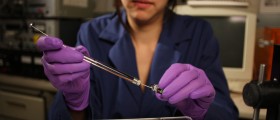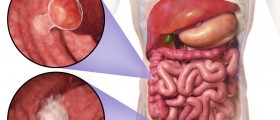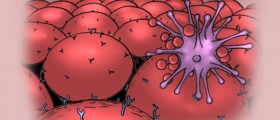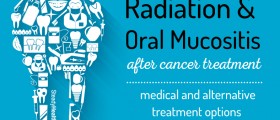Antineoplastic agents represent a group of medications used with patients suffering from cancer. They are specially designed chemotherapeutics highly effective against cancer cells. Antineoplastic agents can cause the death of rapidly proliferating tumor cells.
On the other hand, they may also affect rapidly proliferating healthy cells of the body and cause transient or even permanent damage to certain tissues.
In spite of being toxic antineoplastic agents are always administered in a dose that is effective against cancer cells and does not cause serious and permanent damage to the rest of the body.

More on Antineoplastic Agents
Antineoplastic agents are classified into several groups. They include alkylating agents, antimetabolites, antimitotics, topoisomerase II inhibitors, and generating free radicals. These classes of drugs act differently and their mutual goal is the cessation of further multiplication of cancer cells and cancer cell destruction.
Some of these drugs are used as a single therapy or they can be combined. Furthermore, there is even a chance of combining certain antineoplastic agents with other types of cancer treatment such as radiation therapy.
What Are Side Effects of Antineoplastic Agents?
- Standard antineoplastic therapies including cytotoxic chemotherapy, biological immunotherapies, and hormonal agents tend to increase the risk of drug interaction and adverse events in the geriatric population.
- Moreover, these cytotoxic agents are responsible for an array of side effects, many requiring pharmacological intervention. Managing the cascade of side effects from cancer treatments may require the use of drug therapies that are commonly recognized as potentially inappropriate medication outside of the oncology care continuum but are indicated under these unique circumstances.
- In 2016 there were an estimated 15.5 million cancer survivors living in the United States, > 60% of whom were 65 years or older and this prevalence is projected to grow to > 73% of the survivorship population by 2040.
- Antineoplastic pharmacological agents interfere with cell division, leading to cell kill (cytocidal effects) or failure to replicate (cytostatic effects). These agents, however, are non-selective and their cytotoxic impact affects both healthy normal cells as well as malignant cells. Agents are delivered in a cyclic manner over a span of weeks to months or years in order to maximize the death of cancer cells and to allow for adequate recovery and survival of normal cells.
- Nearly one third of elderly cancer patients are exposed to severe drug interactions and potentially inappropriate medications. The oncologic population is more likely to be exposed to PIMs as they may be indicated for optimal disease management. Rehabilitation providers should use prudent assessment methods to understand the pharmacological agents in use and their side effects and potential interactions.
As it has already been mentioned apart from the destruction of cancer cells, antineoplastic agents can also cause damage to healthy cells. This particularly refers to rapidly dividing cells. This is why the most common side effects of antineoplastic drugs originate from damage to the bone marrow and its cells, the skin (particularly hair follicles), and the inner lining of the gastrointestinal tract.
Gastrointestinal side effects of antineoplastic agents vary and may include loss of appetite, nausea, vomiting, and diarrhea. These side effects occur immediately after the particular drug or a combination of drugs has been administered or they may occur a few days after the treatment.
The bone marrow is highly susceptible to antineoplastic agents. The production of all three types of blood cells can be affected during or after the treatment with antineoplastic agents. Patients generally develop leukopenia, although it is also possible to develop anemia or thrombocytopenia. As a consequence, the chance of infections and increased susceptibility increases.
Antineoplastic agents also have negative effects on hair follicles. This is why some of them cause hair loss. Fortunately, the hair regrows after a certain period of time.
Some patients may develop an allergy to certain antineoplastic agents. If this is the case the specific drug must be discontinued. Additional side effects include fatigue, headaches, water retention, etc. Prolonged and repeated administration of antineoplastic agents may have permanent negative effects on vital organs such as the heart, kidneys, lungs, or liver.
And finally, the usage of these drugs is associated with an increased risk of additional malignant tumors in the future (namely these drugs possess mutagen and carcinogen characteristics).

















Your thoughts on this
Loading...